This past weekend we were treated to three major Modern tournaments: GP Kobe, GP Copenhagen, and SCG Baltimore. They were marvelous—not only did GP Copenhagen have some of the best GP coverage I’ve ever seen, these tournaments proved that Modern is very much alive, diverse, and healthy.
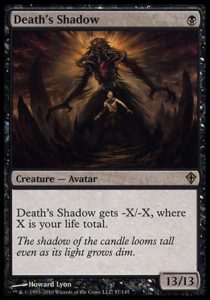
Top Top Eights
GP Kobe’s top eight featured eight different decks* and two different blue control archetypes in Akio Chiba’s Esper Control and Ryoichi Tamada’s Jeskai Control. Not only is blue alive and well, it won the other two tournaments. GP Copenhagen’s top eight featured eight different decks** and SCG Baltimore’s had five and a half.*** Both of those tournaments were taken down by Death’s Shadow, while Abzan and Jund Death’s Shadow (generally considered the best versions of the archetype) were nowhere to be found in those top eights (though the highly unusual Sultai and Five Color Zoo were).
* with two very different flavors of Eldrazi
** with two very different flavors of Death’s Shadow
*** two Grixis and one Sultai Death’s Shadow. Also, SCG’s website at the time this article was written was missing the 7th place decklist, so there could well be a sixth archetype
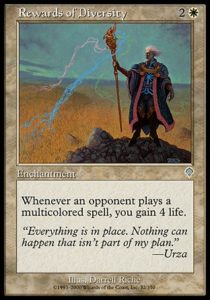
Plenty of Potential
Modern is in a wonderful place right now. Death’s Shadow may well be the best deck in the format, but it is both a deck in flux and not the unstoppable bogeyman that Eldrazi was a year ago. If you want to beat it, you can, and you can do so without needing to lose to a substantial portion of the metagame. There is no unstoppable deck in Modern (though folks did have high hopes for Counter Company being the second coming of Melira Pod).
Modern has always had a large amount of diversity (partly because decks remain viable for very long stretches of time and partly because decks can be quite expensive), but these top eights stand in stark contrast to Standard. Sure, Standard is never going to have as many decks as Modern (given the dramatically different sizes of their card pools) and we’ve seen comparably diverse top eights (such as that of Pro Tour Kaladesh). Lately, Standard has had a diminishing number of decks at the top of the pyramid. Bans have only seemed to compound this problem (or be unable to stop this trend), as we went from a three deck metagame (Blue-White Flash, Mardu Vehicles, and BG Emrakul decks) to a two deck metagame (Mardu Vehicles and Four Color Copycat) to a one deck metagame (where Temur Marvel seems to have a positive matchup against every deck). It makes one miss the days of the Modern Pro Tour. Which not-so-subtly raises the question: do we want it back?
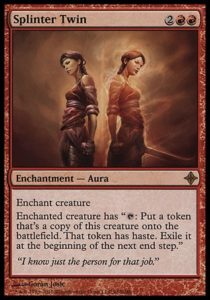
A Solvable, Less Dynamic Format?
Now, I never wanted the Modern Pro Tour to go, but there was good reason for it to end. First, the Modern Pro Tour wreaked havoc. Every year, something would be banned for the sake of shaking up the format. This invalidated entire archetypes and substantial financial investments, and it generated enormous uncertainty. Secondly, giving the best teams and players in the world a major incentive to dedicate their efforts towards breaking the format led to rapidly solved formats.
For all we know, we’re in an unstable equilibrium and the format isn’t as balanced as the past weekend suggests. However, the lack of a Modern PT means it’ll take much, much longer for us to solve the format, likely long enough for Hour of Devastation to come out and change it again. After all, we’ve certainly seen impactful new cards in the past year, such as Desert Cerodon, Prized Amalgam, Traverse the Ulvenwald, Grim Flayer, Inventors’ Fair, Collective Brutality, Baral, Chief of Compliance, the enemy-colored fastlands, Chandra, Torch of Defiance, Sram, Senior Edifier, Vizier of Remedies, and the mighty Fatal Push—why shouldn’t Hour of Devastation give us a new tool or three?
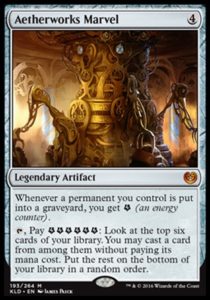
Are things better this way?
We can’t know for certain whether Modern is better off not having a Pro Tour. Sure, I miss it, but the format’s popular, thriving, and seems to have more top tier decks than I’ve ever known it to have. It could very well be in this position as a direct consequence of less highest-level play.
We could however ask a different question: is Standard better off now that it is the top level Constructed format? Having the spotlight continuously shining on it shouldn’t be a problem—R&D curates it fastidiously (whereas nonrotating formats are far too large to be tested in-house). However, Standard has been considered to be in a deeply unhealthy state for at least six months (when there were three tier 1 decks and none of them had made it to the finals of the Pro Tour). Much of this has nothing to do with Standard’s design (the biannual rotation’s introduction and removal had large effects on the format and participation), but perhaps Standard is suffering from overexposure just as Modern did.
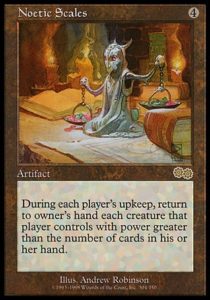
A zero sum situation?
Perhaps Modern being in such a good place is a direct consequence of Standard being in a worse place. People want to play Constructed but not Standard, so they turn to Modern. There is no definitive pro-level consensus as to what the tier 1 decks are, so more things seem possible and people try out more decks. The player base grows, but it doesn’t converge on a small number of decks.
For Standard, the opposite happens—pros keep playing Standard because that’s the format of the PT and numerous GPs, but less competitive players drop out. The audience is a little bit smaller and composed of a larger percentage of the best players in the world, all of whom are still trying to break the format (and have less of a reason to ever not focus on Standard). The format converges on a small number of decks. This is exacerbated by R&D having never tested this current Standard (Emrakul, the Promised End and Smuggler’s Copter were legal, Copycat never existed, and BfZ block had rotated out).
Ideally, when Standard rotates with Ixalan’s release in the fall, it will reach a new equilibrium, one that is diverse, fun, and fair. But it will still be worth considering whether Standard can withstand the scrutiny of four PTs a year, or if things might be better if another format picked up the slack (and also whether it be worth the potential damage to that format).
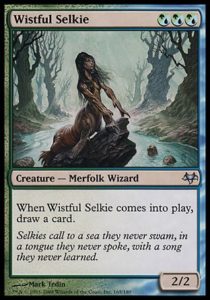
That’s all interesting conjecture, but here’s one thing I can say with certainty: I’ve never been more excited to watch and play Modern. I can’t wait for the next big tournament and hope to see more quality coverage like WotC treated us to this past weekend.
And, as always, thanks for reading.
—Zachary Barash
Zachary Barash is a New York City-based game designer. He learned Magic in 1994 and is still afraid of Living Wall (don’t click it! It’ll see you!). He just received his MFA in Game Design at NYU and designs for Kingdom Death: Monster.
His favorite card of the month is Hieroglyphic Illumination. It combines two underwhelming cards into something far greater than the sum of its parts, and that’s before considering all of the cycling and spells-matter shenanigans in Amonkhet.

